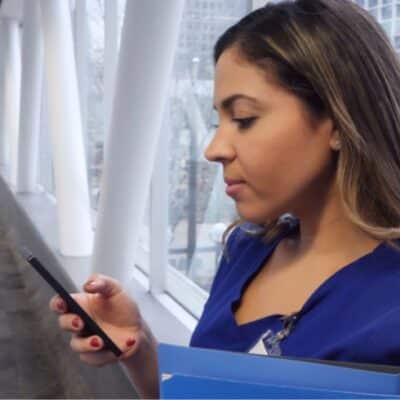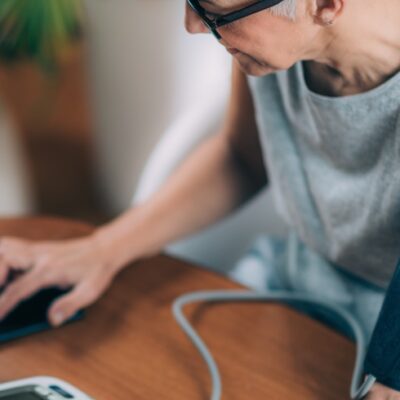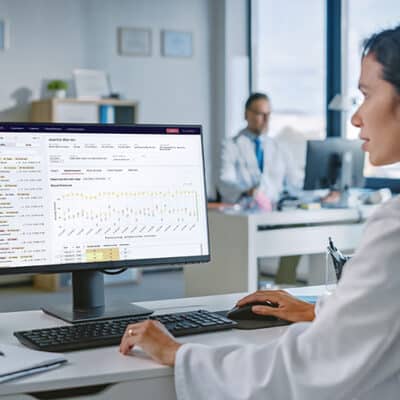Healthcare today is shifting beyond the four walls of the hospital, with the home becoming a more essential point of care. There has been tremendous progress in the adoption of digital health technologies and remote care programs such as remote patient monitoring (RPM), remote therapeutic monitoring (RTM), chronic care management (CCM) and principal care management (PCM).
Which Remote Care Program is Right for Your Patients?
Healthcare systems and providers are turning towards remote care strategies to help improve clinical workflows, efficiency, and overall patient care. But with so many different programs available, how do you know which one(s) are right for your patients?
Understanding the differences between remote care programs is essential for accurate implementation, billing, and patient care. Although all four programs support patient care, there are many inherent differences that range from diagnostic criteria to billing and clinical care team requirements. Understanding these key differences can help facilitate more efficient and effective care and outcomes.
Remote Patient Monitoring (RPM)
RPM uses digital devices to monitor and collect physiological health data such as blood pressure, blood sugar, weight, and oxygen levels from patients outside the clinical setting. These devices securely transmit that information directly to healthcare providers, who can then monitor a patient’s vitals between office visits.
RPM must be ordered by a physician or qualified healthcare provider (QHCP) who can bill for E/M services. While no specific diagnosis is required to qualify, RPM must be deemed medically necessary, involves the use of FDA-defined devices with a minimum of 16 days of readings per 30 days, and requires a minimum of 20 minutes per month by clinical staff.
Remote Therapeutic Monitoring (RTM)
RTM is the remote monitoring and management of non-physiological patient data, such as the status of a patient’s musculoskeletal or respiratory system or the adherence and response to medication and therapy. Unlike RPM, RTM can be ordered by QHCPs, who cannot independently order and bill E/M services. This widens the scope to include nurse practitioners, physician assistants, physical therapists, speech and language pathologists, occupational therapists, dietitians, clinical social workers and clinical psychologists.
Like RPM, no specific diagnosis is required, but RTM must be deemed medically necessary, requires the use of FDA-defined devices with a minimum of 16 days of readings per 30 days, and requires a minimum of 20 minutes per month by clinical staff. However, per the American Medical Association’s CPT Manual, RTM and RPM CANNOT be billed together.
Chronic Care Management (CCM)
CCM services are provided to Medicare beneficiaries with two or more chronic health conditions, such as diabetes, hypertension, asthma, CHF, COPD, or pneumonia, that are expected to last at least 12 months or until end-of-life and may include RPM or RTM. These services are typically comprised of non-face-to-face services and care goal coordination of multiple providers, medications, community services, and other information about a patient’s health.
CCM assists and benefits patients by helping them better understand their condition and provides careful monitoring so that medications and other treatments may be adjusted promptly. Unlike RPM and RTM, there are no device reading requirements, but the patient must have multiple chronic conditions lasting 12 or more months. CCM must be ordered by a physician or QHCP and requires a minimum of 20 minutes by clinical staff per month OR 30 minutes personally by a physician or QHCP. CCM can be billed in conjunction with RPM or RTM. However, time requirements must be met separately.
Principal Care Management (PCM)
Like CCM, PCM provides services for patients who require ongoing clinical monitoring and care coordination. However, unlike CCM, PCM only requires patients to have one complex chronic condition. For example, PCM could be appropriate for a patient with uncontrolled diabetes, uncontrolled hypertension, or a high-risk patient with severe asthma who has frequent hospital readmissions. It could also be necessary for someone with hepatitis C, fibromyalgia, long-haul COVID-19, or a variety of other complex chronic conditions.
PCM has no device reading requirements, can be ordered by a physician or QHCP, and has a required minimum of 30 minutes by clinical staff, physician, or QHCP per month.
The Future of Remote Care
For today’s overburdened healthcare practices, remote care programs have a long list of benefits. These programs help providers deliver more accessible care, resulting in higher patient engagement, more informed clinical decision-making, earlier interventions, and improved outcomes.
In addition, patients are seeking out remote care services now more than ever. No longer is remote care a “nice-to-have.” It has become an essential part of the patient care model. Those who embrace it will not only experience operational and financial benefits but, more importantly, they will create more patient-centric interactions that transform the overall patient experience, which is essential for stronger patient relationships and better care.



